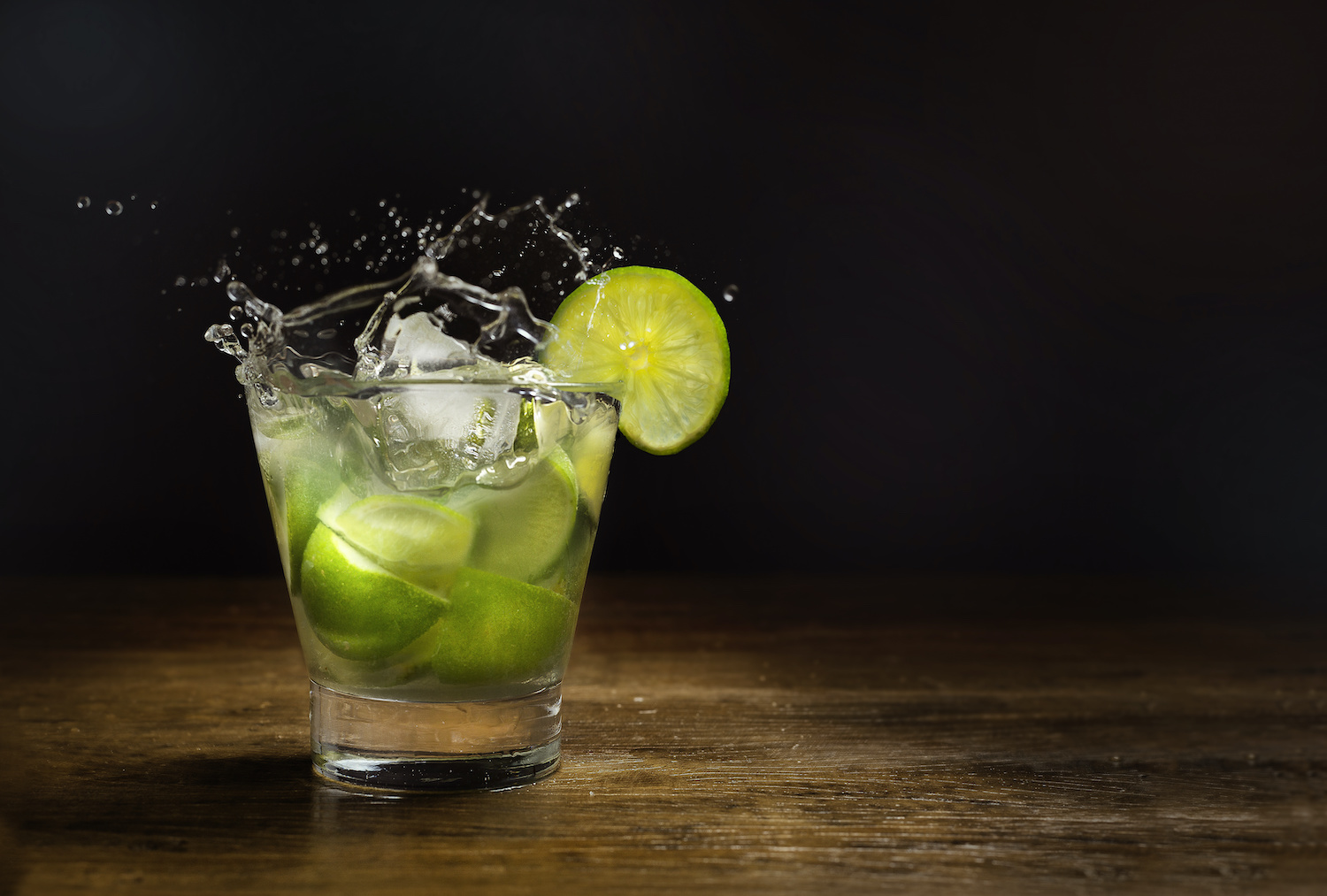The Brazilian food and beverage scene has given birth to a number of iconic and culturally significant cocktails. But none more so than the world-famous Caipirinha. This refreshing beverage is the national drink of Brazil for a good reason: all of its ingredients, across a multitude of variations, reflect the country’s unique history and environment, each glass brimming with story and culture. It’s also delicious.
So let’s take a look at what makes the Caipirinha cocktail one for the history books, and learn what it takes to do the traditional Caipirinha drink recipe justice. Cheers!
History of the Caipirinha
Today, a Caipirinha cocktail is a fun and popular beverage to order on a night out, or make at home to share with a group of your closest friends. But the original Caipirinha recipe was designed as a medicine used to treat viral illnesses like the Spanish flu.
While an iconically Brazilian drink, its true origins actually lie just across the Atlantic ocean. a Caipirinha-like prototype was first described in 1918 in Alentejo, Portugal, made with cachaca, green lemon, honey and garlic. (Fans of natural medicine will recognize some of these ingredients as the main components in fire cider -- a homemade treatment for colds and mild respiratory sickness.) The high concentration of vitamin C in green lemons can work wonders for someone with the sniffles, and a strong alcohol will help the sipper quickly absorb these therapeutic components. Garlic is a natural anti-viral, and honey helps to soothe a sore throat.
The Caipirinha drink we know and love today was also likely influenced by a different Portuguese cocktail called Poncha, an older (non-medicinal!) beverage made from aguardente de cana (sugarcane alcohol), honey and citrus juice.
Caipirinhas are still sometimes used medicinally today, although they taste a whole lot better. The garlic was taken out, and ice added to the serving glass to help cool the bite of the citrus and strong liquor, and many mixologists choose to sub sugar for the traditional honey sweetener. Cachaca is still the primary alcoholic component, and has been in production since around 1500.
So technically a Portuguese cocktail, this drink quickly became a symbol of Brazil after Portugal relocated much of its sugarcane production to South America. And Brazilians are serious about their Caipirinhas: a law in the country states that only drinks in this style made with lime juice may be referred to as Caipirinhas.
Plus, the word Caipirinha (pronounced kai-pr-een-yuh) is uniquely Brazilian, derived from the Brazilian Portuguese word for “hillbilly” - caipira.
Caipirinha Recipe
Now that you know everything there is to know about where the global Caipirinha menu came from, let’s talk about what it takes to make one yourself.
Caipirinha Recipe Ingredients
A traditional Caipirinha cocktail drink recipe as defined by the International Bartender’s Association as well as the Brazilian government includes just 4 ingredients:
- cachaca
- cane sugar or simple syrup
- lime
- and ice, whole or crushed.
Garnishes can include a lime wedge or sugar cane stick.
Technically, legally, addition or subtraction of any one of these ingredients means that the end product may no longer be called a Caipirinha. But mixologists are by nature a creative bunch, and there are a multitude of different takes on the traditional Caipirinha which add a special unique twist while still honoring the original concept. Minimalist variations change the sweetener only, subbing in the original honey, or using brown sugar for a richer flavor experience.
The word Caipirinha is often used to describe any cocktail made from cachaca and fruit juice. Popular variations which mostly stick to the original recipe include Strawberry Caipirinhas, Passionfruit Caipirinhas, Orange Caipirinhas, and Ginger-Papaya Caipirinhas.
A Caipifruta is another popular and fruity cocktail concept which uses most of the same ingredients as a traditional Caipirinha, although they sometimes leave out the lime altogether and therefore can’t be officially named a Caipirinha. This cocktail can include one or more muddled fruit -- tropical fruits are most common -- sugar, cachaca and ice.
Alternative Alcohol Caipirinha Recipes
There are also a number of Caipirinha-like cocktails that ditch the cachaca and sub in other liquors as the alcohol component. Keep these in mind next time you’re craving a Caipirinha but can’t get your hands on cane sugar spirits:
- Caipiroska: vodka, sugar, lime and ice.
- Sakerinha: sake, sugar, lime and ice.
- Caipinheger: Steinhager (German gin), sugar, lime and ice.
- Caipirao: Licor Beirao (Portuguese cane sugar spirits), lime and ice.
- Camparinha: Campari, sugar, lime and ice.
- Caipirissima: light rum, sugar, lime and ice.
How to Make a Caipirinha
Gather your ingredients -- traditional or non-traditional, we won’t judge -- and let’s get started.
You will need a sturdy, wide-mouthed glass, a muddler or wooden spoon, a small knife and a cocktail shaker (optional).
Step 1: Cut your lime into four even wedges.
Step 2: Place three of the four wedges in the bottom of your glass and smash with your muddler or wooden spoon to release the juice and skin oils.
Step 3: Pour in 2 tablespoons of cane sugar or 3 tablespoons of simple syrup over limes and stir vigorously.
Step 4: Add 2 ounces of cachaca and stir.
Step 5: Add crushed ice, or whole ice for a more traditional experience and give it a final stir.
(Note: if you’re using a cocktail shaker, muddle limes in shaker and add all ingredients to shaker before mixing. Pour shaken cocktail over ice in glass.)
Step 6: garnish with your fourth lime wedge and a fresh stick of cane sugar and enjoy!



Comments